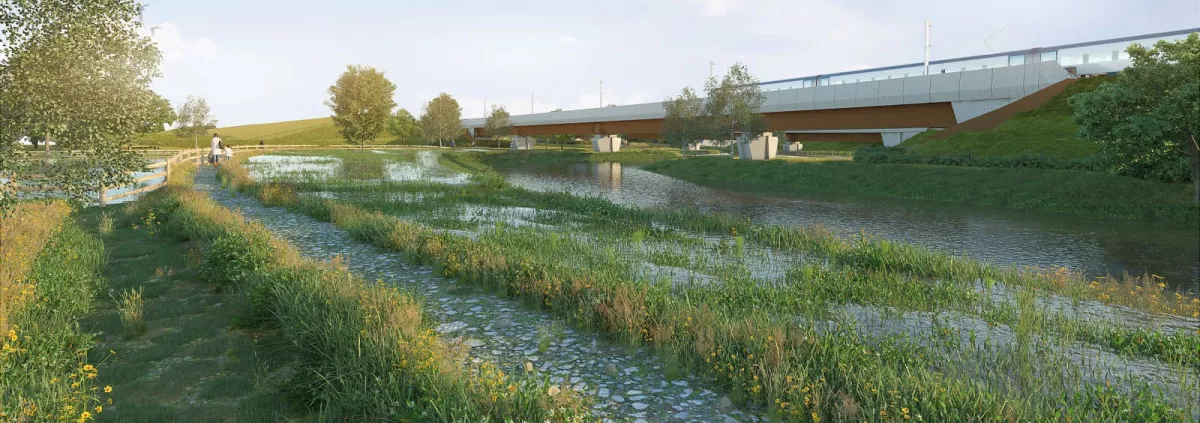HS2 is currently Britain’s biggest environmental project, delivering miles of ecological and landscape investments alongside construction. The River Cole realignment is an example of one of the many elements within the wider project. Landscape includes agricultural farmland and formal parkland with woodland and standalone trees, vegetation on the site is varied with riverside habitat, woodland blocks, and mature scattered trees, throughout.
Also known as Delta Junction, the design vision is to be a catalyst to integrate HS2 into the landscape, but also to use HS2 to integrate the site into the wider area. This will be achieved by creating a harmonic relationship with the railway, the site, and the wider landscape through the use of connectivity, habitat creation and biodiversity, landscape integration, and flood mitigation.
SYSTRA is working in a Design Joint Venture with Mott MacDonald, supporting contractor Balfour Beatty VINCI (BBV) to provide technical direction and advice regarding the hydraulic modelling, optioneering, and replacement flood storage design and analysis, while reporting and presenting to HS2 and the regulator, the Environment Agency.
As part of SYSTRA's work, high-level optimisation of the design included:
- Moving viaduct embankments out of the floodplain
- Adding additional flood relief culverts
- Remodelling river realignment
- Remodelling replacement floodplain storage
Design elements follow the principles of a Nature Based Approach (NBA), with a range of functions brought together in recognition of the area's complexity to deliver a holistic approach to the design. These include:
- flooding and ponds
- river diversion
- biodiversity
- heritage
- recreation
- resource efficiency
- clean water
- climate resilience
- aesthetics
- stewardship
The design of the River Cole realignment illustrates how landscape, ecology, and water (nature) based solutions are key in creating communities resilient to climate change. Large-scale infrastructure projects can not only help to mitigate the effects of climate change locally but can also be the driver for wider change by sharing lessons learned and best practice.
A link to a PDF of the virtual exhibition boards may be found here.
